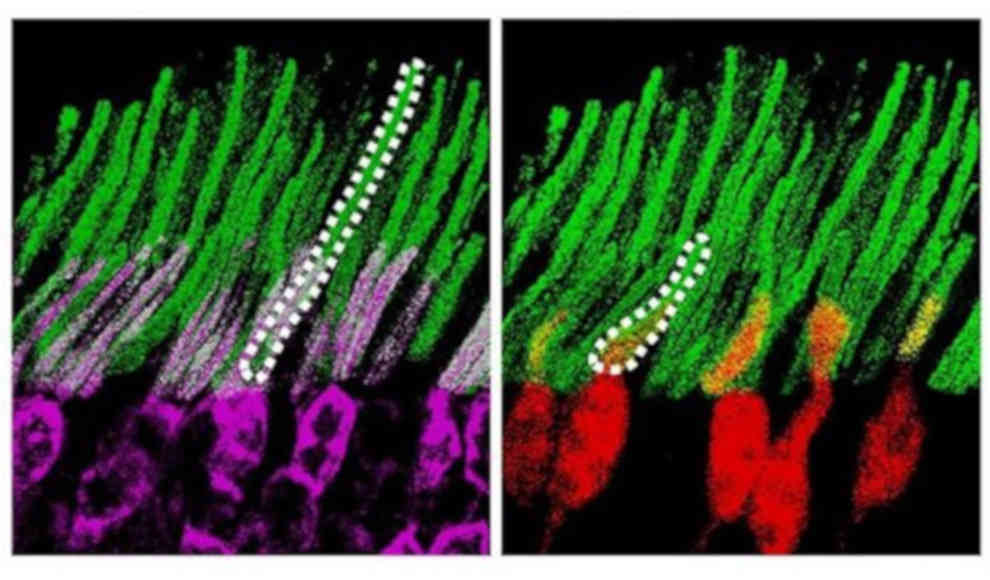Scientists at the University of Massachusetts Medical School and the Chinese University of Science and Technology have developed a method to alter the vision of mice, allowing them to see infrared light. The researchers injected nanoparticles into the light receptors beneath the retina of the mice, which enlarged their visible light spectrum. The nanoparticles combined two infrared photons into a single photon, changing the wavelength from 980 nanometers to 535 nanometers, which is visible to mice. The mice were able to see the previously invisible infrared light as green. The nanoparticles were encased in a protein shell to prevent rejection by the mice’s immune system. The mice’s vision returned to normal after about ten weeks when the nanoparticles were naturally broken down.
The majority of living beings, including mice and humans, can only perceive a small portion of the electromagnetic spectrum with their eyes. Most colors outside the spectrum of 380 nanometers (violet) and 780 nanometers (red), including infrared light, are invisible to the naked eye. The researchers’ method of injecting nanoparticles into the mice’s eyes allowed them to see infrared light, which they previously could not. The mice reacted to the infrared light by contracting their pupils, proving that the light receptors in conjunction with the added nanoparticles could perceive infrared light. The researchers found no side effects from the nanoparticles, and the mice’s normal vision was unaffected.
The researchers believe that their method could also be applied to humans, potentially expanding the human visible light spectrum. The nanoparticles could be further developed to allow humans to see ultraviolet light as well as infrared light. The study’s results were published in the journal Cell.










